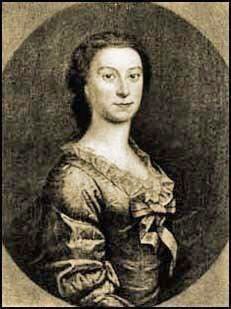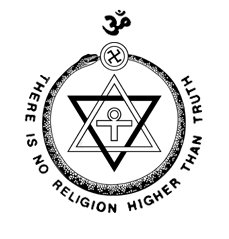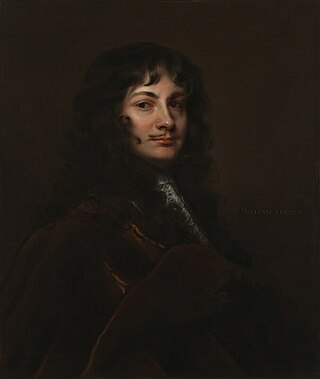External links
- Journal to Stella – e-text at the University of Adelaide
| Sermons | ||
|---|---|---|
| Satires |
| |
| Essays |
| |
| Miscellany |
| |
| Related | ||
A Journal to Stella is a work by Jonathan Swift first partly published posthumously in 1766. It is a collection of letters that Swift wrote for Esther Johnson, his close friend and secret wife.
It consists of 65 letters to his friend, Esther Johnson, whom he called Stella and whom he may have secretly married. They were written between 1710 and 1713, from various locations in England. Though clearly intended for Stella's eyes, the letters were sometimes addressed to her companion Rebecca Dingley.
Amongst the references to contemporaries of Dean Swift, frequent mention is made of Lady Elizabeth Germain. [1] There is also mention of St. George Ashe, Bishop of Clogher, an old friend who by some accounts secretly married Swift to Stella in 1716.

Jonathan Swift was an Irish satirist, author, essayist, political pamphleteer, poet, and Anglican cleric who became Dean of St Patrick's Cathedral, Dublin, hence his common sobriquet, "Dean Swift".

John Boyle, 5th Earl of Cork and 5th Earl of Orrery, FRS was an Anglo-Irish writer and a friend of Jonathan Swift, Alexander Pope and Samuel Johnson.

Esther Vanhomrigh or Van Homrigh, an Irish woman of Dutch descent, was a longtime lover and correspondent of Jonathan Swift. Swift's letters to her were published after her death. Her fictional name "Vanessa" was created by Swift by taking Van from her surname, Vanhomrigh, and adding Esse, the pet form of her first name, Esther.

Esther Johnson was an Englishwoman known to have been a close friend of Jonathan Swift, known as "Stella". Whether or not she and Swift were secretly married, and if so why the marriage was never made public, is a subject of debate.

Ascended masters in the Ascended Master Teachings of a number of movements in the theosophical tradition are held to be spiritually enlightened beings who in past incarnations were ordinary humans, but who have undergone a series of spiritual transformations originally called initiations.

Sir William Temple, 1st Baronet was an English diplomat, politician and writer. An important diplomat, he was recalled in 1679, and for a brief period was a leading advisor to Charles II of England, with whom he then fell out. Temple subsequently retired to the countryside, and thereafter occupied himself with gardening and writing. He is best remembered today for two aspects of his life after retirement: a passage on the designs of Chinese gardens, written without ever having seen one, and for employing a young Jonathan Swift as his secretary. The first is sometimes given as an early indication of the English landscape garden style, praising irregularity in design.

Mary Davys (1674?–1732) was an Irish novelist and playwright.

Vanessa (1868) is a painting by John Everett Millais in Sudley House, Liverpool. It is a fancy portrait depicting Jonathan Swift's close friend and correspondent Esther Vanhomrigh (1688–1723), who was known by that nickname, which Swift himself invented for her.
Anne Long, was born at Draycot Cerne, Wiltshire, one of six children of James Long and his wife, Susanna, née Strangways. A celebrated beauty, she was the granddaughter of Sir James Long, 2nd Baronet, and of another leading civil war politician, Giles Strangways (1615–1675). She seems to have spent much of her childhood at her maternal grandparent's home at Melbury House, Dorchester, Dorset, probably due to her parents' unhappy marriage. Privately educated, she never married. Long was greatly admired by Jonathan Swift, although their relationship never had the same intensity as those Swift had with Esther Johnson and Esther Vanhomrigh.

Esther is a female given name known from the Jewish queen Esther, eponymous heroine of the Book of Esther.
Henry Bentinck Boyle, 5th Earl of Shannon was an Honorary Colonel of the 2nd Brigade, South Irish Division, Royal Artillery.

St. George Ashe, D.D. was an Irish mathematician and university administrator who, in the late 17th and early 18th centuries, served as Church of Ireland Bishop of Cloyne, Clogher and Derry, in succession. From 1685 to 1692 he was the Donegall Lecturer in Mathematics at Trinity College Dublin. He is remembered now chiefly for his alleged role in performing a secret marriage between Jonathan Swift and Esther Johnson (Stella).

Lady Elizabeth "Betty" Germain was a wealthy English aristocrat and courtier, a philanthropist and collector of antiquities, who corresponded with literary and political figures.
Thomas Sheridan was an Anglican divine, essayist, playwright, poet, schoolmaster and translator. He is chiefly remembered for his friendship with Jonathan Swift.

Richard Marlay was Dean of Ferns from 1769 to 1787; and Bishop of Clonfert and Kilmacduagh from 1787 to 1795 when he was translated to Waterford and Lismore. He died in office on 1 July 1802.
Robert Marshall (c.1695–1774) was an Irish judge. He is remembered chiefly as co-executor and legatee of Esther Vanhomrigh, the beloved "Vanessa" of Jonathan Swift, although he was not a close friend of hers; indeed it is possible that they never met.
William Tisdall (1669–1735) was an Irish clergyman. He was well known in his own time as a writer on religious controversies, but he is now mainly remembered for his friendship with Jonathan Swift. The friendship was damaged by Tisdall's wish to marry Esther Johnson, Swift's beloved friend Stella.
Sir John Lyndon was an Irish judge and politician of the seventeenth century. He was the first holder of the office of Third Serjeant-at-law, which was created especially for him, apparently as a "consolation prize" for not being made a High Court judge the first time he sought that office. He was also Recorder of Carrickfergus for many years, a position held by several members of the Lyndon family over the best part of a century.
Robert Lindsay (1679-1743) was an Irish barrister, politician and judge in eighteenth-century Ireland. He is best remembered for his close friendship with Jonathan Swift, whom he advised on the legal aspects of the Drapier Letters.

Susanna Elizabeth Burney, later known as Susan Phillips, was an English letter and journal writer. She wrote 650,000 words and her letters are said to be "the most important source on opera in the period".